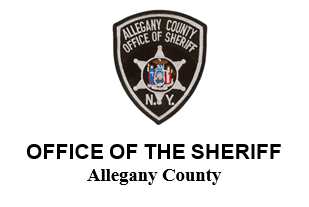Part II of the series “The State’s Quiet Usury: How Albany Drains the Counties”
By Clayton “Tiger” Hulin, R.N.
Walk into any county courthouse in New York State and look around.
You will see the state seal on the judge’s bench, state uniforms on the officers, and state forms on every desk. But the light over your head, the heat in the room, and the roof that keeps the snow out all belong to county property.
The Unified Court System operates out of county-owned buildings across New York, rent-free. They pay no lease, no utilities, no maintenance, not even snow removal or lawn care. The counties pay to house the state’s justice, literally.
The State’s Lease That Never Was
In Cattaraugus County, the Little Valley courthouse alone costs hundreds of thousands each year to heat, cool, insure, and maintain. Add in cleaning staff, electricity, security checkpoints, and IT systems, and the bill grows fast. Every penny of that comes from local taxpayers.
If Albany paid fair market rent for the square footage it occupies, the county would easily collect over half a million dollars a year, money that could lower property taxes or pave more roads. Instead, the state sits in the front row of local government like a wealthy guest who never picks up the tab.
This is not unique to Cattaraugus or Allegany. Every county across New York hosts state courts in county buildings. The state’s legal system rests on county infrastructure, while state leaders in Albany praise “shared service” as if it were a gift rather than an expectation.
The Cost Beneath the Bench
When a light bulb burns out above a judge’s bench, a county worker changes it. When the elevator fails, a county contractor fixes it.
When pipes freeze, when carpets wear thin, when the courthouse Wi-Fi crashes mid-trial, every bill lands on the county desk.
The irony is that Albany demands these courthouses meet its standards: ADA access, secure holding cells, surveillance systems, fire code compliance. If they fall short, the state can mandate upgrades, but it still does not pay for them.
The courts serve state justice, but the check is written by the locals.
A Quiet Kind of Usury
It is a kind of financial gravity that no one sees because it has always been there. People shrug and say, “That’s just how it works.”
But imagine any other landlord-tenant relationship like this: the tenant uses half the building, controls its operation, makes the rules, and pays nothing. It would not last a week in private life. Yet in government, it has become a ritual of silence.
If counties billed the Unified Court System at even twenty dollars per square foot, a modest commercial rate, Allegany County could reclaim roughly four hundred fifty thousand dollars annually and Cattaraugus closer to seven hundred thousand.
That is not theory. That is math.
A Two-Way Street
Albany often talks about cost-sharing. But sharing implies both parties pay. Here, one hand keeps taking while the other hand writes speeches about fiscal discipline. If New York State wants to charge counties for programs and mandates, then it is time for counties to start billing back for the rent.
The ledger cuts both ways.
A Matter of Principle
This is not about resentment. It is about fairness. Local taxpayers already fund their sheriffs, their schools, their roads, and their services. They should not also be footing the state’s overhead for courtrooms and chambers.
The judiciary deserves respect. The buildings deserve upkeep. But the people who pay for them deserve credit, and relief.
A Word to the Workers
To the county maintenance crews, custodians, and clerks who keep these buildings running day and night, thank you. Without you, the marble halls would echo with nothing but politics. You are the quiet caretakers of justice, and your work deserves more than a budget footnote.
A Closing Word
If the state of New York wants to occupy the courthouse, it can start by paying the rent. Until then, every time the gavel falls in Belmont or Little Valley, it falls in a building the state does not pay for.
And maybe, just maybe, it is time the counties posted the bill on the door.
— Tiger Hulin
For The Wellsville Sun
The State’s Quiet Usury — Part II: The Free Rent | © Tiger 2025 | For The Wellsville Sun






